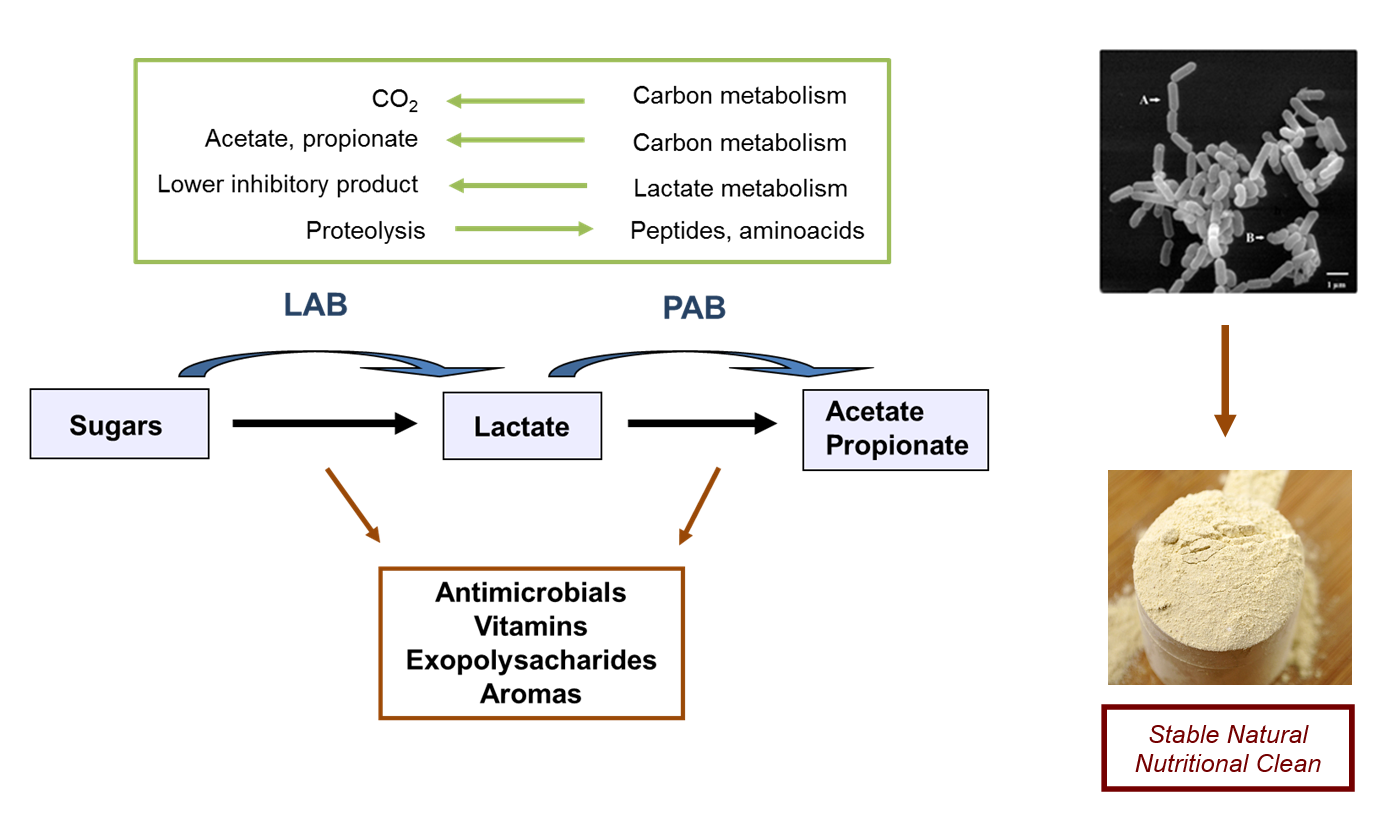Development of multifunctional bakery bioingredients and nutritional supplements by fermentation of cocultures of lactic acid bacteria and propionibacteria – Commission Technology Innovation & Industry
The antimicrobial activities of lactic acid bacteria (LAB) and propionic acid bacteria (PAB) make them especially appropriate for industrial food biopreservation applications and for in situ and ex situ production of functional and nutritional metabolites. The subtle interactions of LAB and PAB are likely important for their preservative effects which has been shown to rely on a variety of antimicrobial compounds, such as lactic, propionic and acetic acids, hydrogen peroxide, diacetyl, and several other low-molecular metabolites as well as bacteriocins. The cultivation of PAB in the presence of LAB is a classic example of commensalism, with a trophic chain for the carbon source. LABs produce lactic acid from different sources of carbohydrates which serves as preferential carbon source for PAB to grow and produce propionic and acetic acid.
Multifunctional ingredients are developed by co-cultivation technology using selected strains of Lactobacillus and Propionibacterium for application in bakery products and for nutritional and biopreservative properties for a wide range of food and supplement applications. Following a broad screening of a natural biodiversity of LAB and PAB for folate and vitamin B12 production, a highly efficient fermentation process was developed using a co-culture of Lactobacillus plantarum SM39 and Propionibacterium freudenreichii DF13. Using a two-step process fermentation in whey based medium very high yield of total folate was produced, comparable to genetically engineered strains, with nutritionally-relevant levels of the two vitamins. We also develop LAB-PAB mixtures in cereal based medium fermentation to produce multifunctional natural bakery ingredients, such as: antifungal and antibacterial products with flavor enhancing properties; nutritional vitamin ingredient (folate and vitamin B12); anti-staling (exopolysaccharides) and antimicrobial ingredients for improving product texture and shelf life. Finally the multifunctional ingredients (both whey- and cereal-based) are tested in selected applications of bakery and nutritional supplements and evaluated for stability.
The broad metabolic array of LAB and PAB cultures and the mutualistic nature of LAB–PAB interactions make them particularly suited for application in robust and controlled fermentation processes at industrial scale. The selection of co-cultures exhibiting different characteristics is particularly promising for extending the production of a range of unique functional and/or nutritional designer bioingredients.

